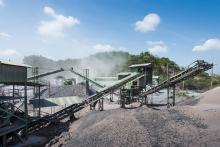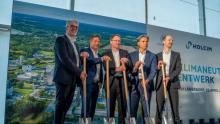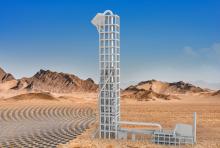
The "2050 schedule - a cement with neutral climate impact" document sets out how it intends to achieve or even exceed this objective.
The association says the Swiss cement industry has reduced total CO2 emissions by 38% since 1990, corresponding to a decrease of 27% per tonne of cement.
To achieve its desired objectives, Cemsuisse says that efforts in all areas are essential. As part of these efforts it says that varieties of cements and concretes are constantly being developed, while the manufacturing process completely abandons primary fossil fuels, all the accompanying processes are decarbonised and, finally, CO2 separation technologies isolate the remaining emissions directly at the outlet.
Cement's main component clinker is the major source of CO2 in the cement manufacturing process. In lime calcination, carbon dioxide is extracted from the feedstock and combines with oxygen to form CO2 - a process that cannot be avoided in cement manufacturing.
The presence of clinker is essential insofar as it gives the cement its binding properties. Cemsuisse says that reducing clinker in cement, as well as cement in concrete without decreasing its physical properties, is the first challenge to achieving the goal of zero energy consumption.
Another approach is to completely replace primary fossil fuels with alternative fuels, such as salvaged wood, old tires, plastic waste or dried sewage sludge. In this context, particular importance is to be attributed to biogenic fuels.
Cemsuisse says that if these fuels are climate neutral because of their CO2 binding characteristics, they can also be combined with the CO2 separation process to extract CO2 from the atmosphere in a sustainable manner.
In addition to these efforts, the association says that it is essential that all other processes causing CO2 emissions are fully decarbonised. This includes transport performance and the use of electric power in cement plants.
Cemsuisse says the Swiss cement industry is investing in electric vehicles for quarries and concrete production, in conveyor belts for power recovery and for transporting cement by rail.
It adds that another important element of this strategy is the separation of CO2 using innovative new technologies. As part of Carbon Capture and Storage (CCS) and Carbon Capture and Utilisation (CCU), emissions are recovered directly at the source - the exit of the chimneys.
The recovered CO2 can subsequently be stored either in geological layers (storage) or be reused in industry as a commodity (use).
In combination with the use of biogenic fuels, Cemsuisse says it is even possible to obtain a significant additional reduction. The association adds that therefore it is possible that a total 146kg of CO2 per tonne of cement produced can be removed from the atmosphere.









